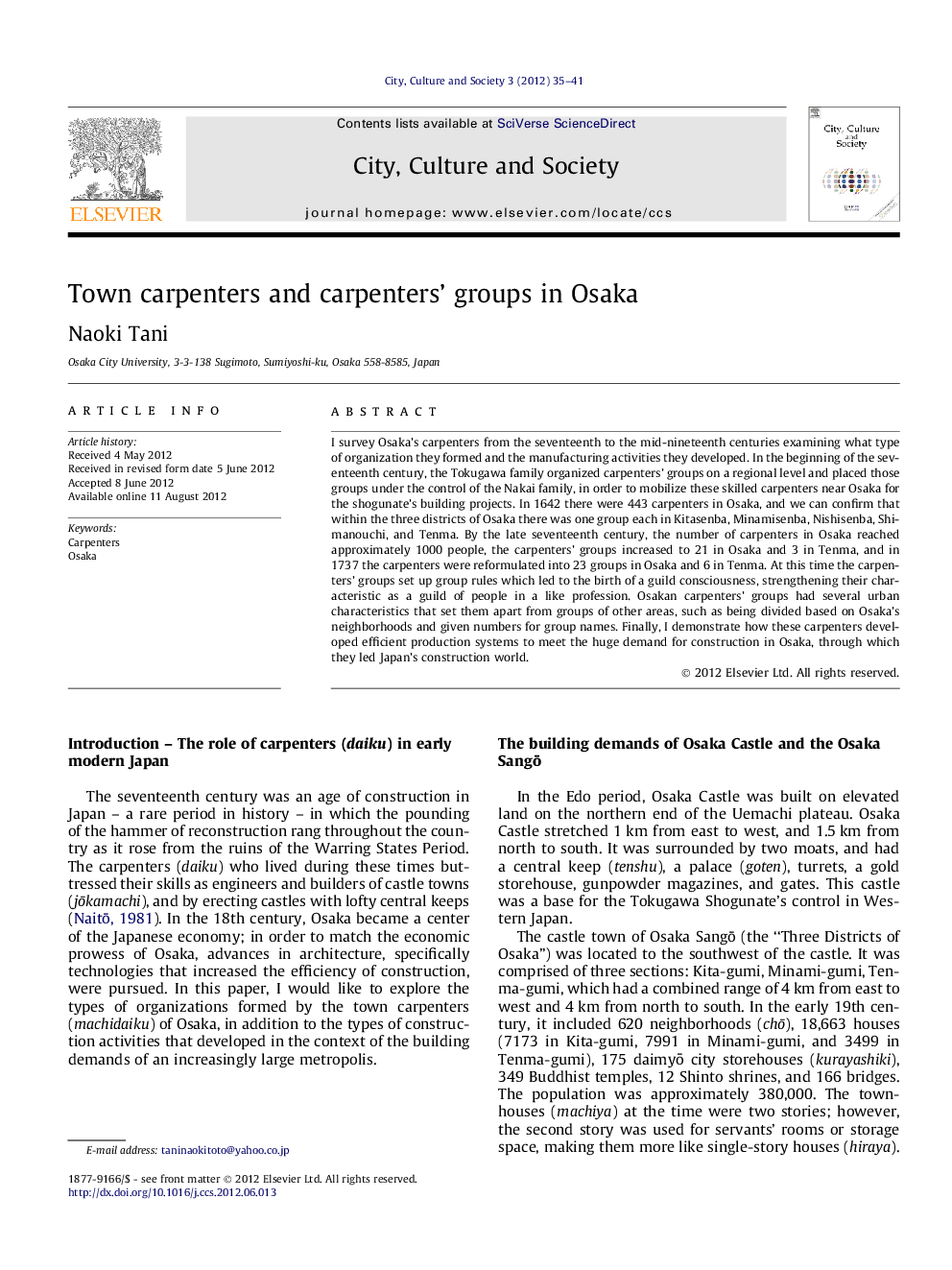| Article ID | Journal | Published Year | Pages | File Type |
|---|---|---|---|---|
| 5048333 | City, Culture and Society | 2012 | 7 Pages |
I survey Osaka's carpenters from the seventeenth to the mid-nineteenth centuries examining what type of organization they formed and the manufacturing activities they developed. In the beginning of the seventeenth century, the Tokugawa family organized carpenters' groups on a regional level and placed those groups under the control of the Nakai family, in order to mobilize these skilled carpenters near Osaka for the shogunate's building projects. In 1642 there were 443 carpenters in Osaka, and we can confirm that within the three districts of Osaka there was one group each in Kitasenba, Minamisenba, Nishisenba, Shimanouchi, and Tenma. By the late seventeenth century, the number of carpenters in Osaka reached approximately 1000 people, the carpenters' groups increased to 21 in Osaka and 3 in Tenma, and in 1737 the carpenters were reformulated into 23 groups in Osaka and 6 in Tenma. At this time the carpenters' groups set up group rules which led to the birth of a guild consciousness, strengthening their characteristic as a guild of people in a like profession. Osakan carpenters' groups had several urban characteristics that set them apart from groups of other areas, such as being divided based on Osaka's neighborhoods and given numbers for group names. Finally, I demonstrate how these carpenters developed efficient production systems to meet the huge demand for construction in Osaka, through which they led Japan's construction world.
⺠Discusses the formation of carpenters' groups in early modern Osaka. ⺠Shows that groups were formed to mobilize carpenters for construction projects. ⺠Shows that their organization was also dependent upon Osaka's structure itself. ⺠Examines the differences between Osaka's groups and those in other cities.
